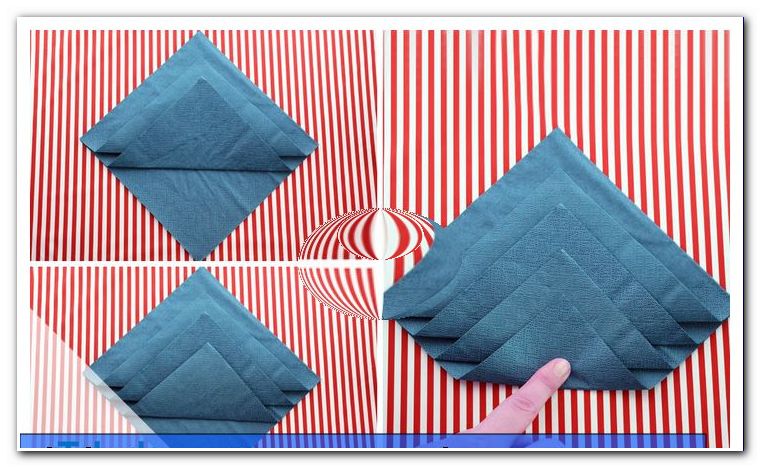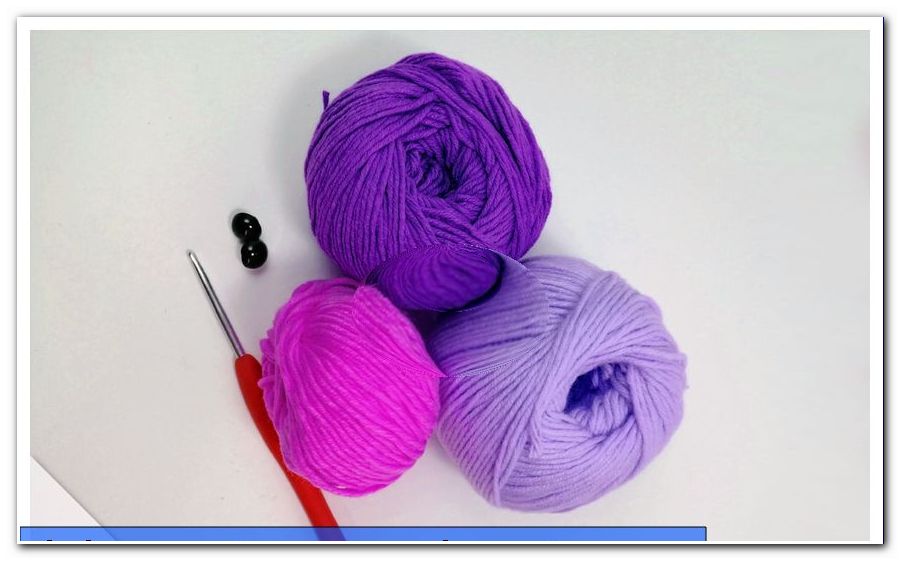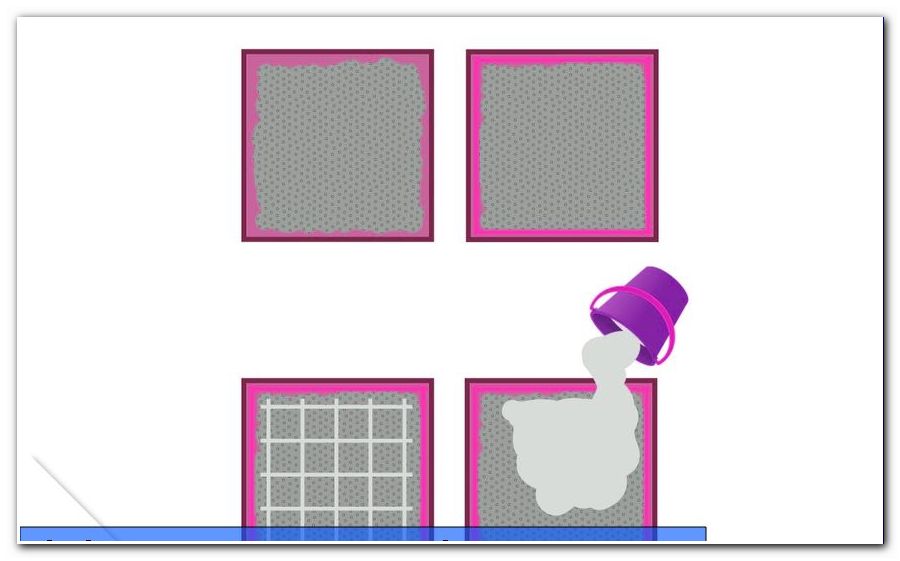Clean milky and turbid water in the pool: 7 variants

- 7 variants for clear water in the pool
- prevention
- deep cleansing
- Optimize pH
- chlorine
- shock chlorination
- Flock cartridges
- ascorbic acid
Pools are a blessing for the summer. They allow you to do sports even on hot days and relax the water. However, over the course of the summer it can be cloudy or milky water that spoils the desire for swimming or swimming. In this case, appropriate countermeasures are available to effectively clean the pool.
If you struggle with murky or milky pool water, you do not have to despair. This condition is triggered by a variety of causes, from algae to dirt to the wrong pH . Turbid water can be eliminated in numerous ways and depends on the particular cause. For example, in some variants, you only have to lower the pH, while in others you use a remedy for algae, so that the formation of the living creatures can be prevented. Pools need a lot of care if you want clear water and do not want to bathe in a pool full of vegetation and dirt.
7 variants for clear water in the pool
If you want to clean turbid water in your pool, there are several options available. Some of these require some physical strength as the water needs to be clean to be clear at all. For others, you just have to use the appropriate means and wait. The following 7 methods will help you to clean and prevent turbid water in the pool. The better you prepare the pool, the less you have to lend a hand in the end.

prevention
The prevention helps true wonders in pool cleaning and ensures that few deposits can accumulate in the water. In addition, you can prevent the growth of algae, which emerge especially on hot summer days in large quantities and multiply quickly, the warmer it is. Prevention is one of the easiest ways to keep the pool water clean so it does not get cloudy and milky. The following points are important in the prevention:
1. Showers: Before you, your family or friends go into the pool, you should definitely take a warm shower. The chlorine in the water disinfects and combats germs and bacteria that can not be removed from the water by the filter system. However, the chlorine reacts to numerous rejections of the human body and products like:
- dander
- sweat
- cosmetics
- urine

These cause the water to turn milky and start to smell bad. A shower is therefore necessary to keep the water clean. In addition, the substance forms nitrogen trichloride in this reaction, which is dangerous for babies.
2. Filter: do not forget to keep your pool filter equipment clean . An effective filtration system effectively helps to keep the water from becoming dirty, as it circulates and cleans it. It also distributes disinfectants such as chlorine thoroughly in the pool. That means: do not forget the maintenance of your filters. It can save you a lot of work.
3. Covering: cover the pool after each use. This prevents dirt, leaves or insects from spreading on the surface and causing turbid water. Also, the cover protects the water from UV radiation, which favors the formation of algae. Open the cover just before you go into the pool to reduce the amount of UV radiation as much as possible.
Tip: the shower is also for pets, especially for dogs, because the best friend of man likes to go in the pool. Dander, dirt and even dog hair can be prevented by a small shower as much as possible.
deep cleansing
If your pool water is cloudy, be sure not to go around cleaning. The pool must first be clean again, before it remains clear through the following measures and prevention throughout the summer. Clean the pool with a pool vacuum in two different ways:
1. Manual: manual pool vacuum are cheaper than automatic pool robots, but require physical effort. These devices resemble vacuum cleaners that you use to clean the walls and pool floor by passing them over these surfaces. The sucker is connected via a hose to the filter unit or the skimmer and so dissolved dirt is transported immediately to this. The more thoroughly you clean the walls and bottom of the pool, the cleaner the water will be.
2. Automatic: automatic pool suction are also connected via a hose to the filter or skimmer and perform the work by itself, similar to a vacuum cleaner robot. You can save the work while the robot takes care of it for you. However, after cleaning by the robot, it is recommended to use the scrubber or manual pool vacuumer again, so that all areas are spotless.

Take your time with the cleaning. The cleaner the pool is at the end of the cleaning, the longer it stays clean as long as you properly prevent it. Only when the water is clear, you should stop cleaning, which can be strenuous with a lot of dirt and algae. Also included in this type of cleaning a landing net over which you collect and dispose of coarse dirt, dirt and leaves from the water surface. The net is also the best remedy for algae. Be sure to wear gloves if you have not removed algae from the water for a long time and smell them badly because then bacteria or even toxins have been able to develop.
Optimize pH
An important way to prevent the formation of milky and cloudy water is to optimize the pH . The pH of the water should be between 7.0 and 7.4, as it is best used with chlorine and other disinfectants. It is therefore essential to check the value of the water via pH testers or digital testers. If this is not within this range, you must proceed in the following way:

1. Lowering the pH value: in the trade you will find so-called pH sinkers and boosters, which, however, are often based on chemicals. You can use them, but there are home remedies that work just as well. If you want to lower the pH, you only need to use acetic acid. To lower the pH by 0.2 units, add one liter of vinegar to ten cubic meters of water. Then you must use chlorine, so that no bacteria look for the vinegar as a food source.
2. Increase pH : the pH is increased by the addition of washing soda. Washing soda is sodium carbonate, which increases the pH by 0.2 units at a rate of 50 grams per 10 cubic meters.
With these agents you can optimize the pH and clean the pool. Due to its optimal pH, the chlorine works best.
chlorine
Do not forget to add chlorine to your pool water. This point is important because, as mentioned above, chlorine disinfects the water and the pool otherwise becomes a pool in the garden within a short time. Chlorine must be used throughout the season to disinfect the water. If the pH is correct, you must check the chlorine of the chlorine using a chlorine meter . If this value is 0.5 ppm, you should definitely use chlorine. The goal is a of 3 ppm. The application could not be easier:
- Read the dosage instructions of the manufacturer thoroughly
- apply the appropriate amount
- Do not use too much, otherwise surfaces and materials in the pool will be attacked
- Similarly, too much chlorine is harmful to humans and animals
- too little chlorine favors the formation of algae
- then let the chlorine dissolve and circulate it over the filter unit
Tip: after the chlorine, add algicide to the water. Algizide is an anti-algae agent that prevents the formation of organisms and thus effectively prevents the development process.
shock chlorination
A shock chlorination should only be used if you absolutely have to clean the pool, for example, if it is heavily filthy and contains no chlorine. The water is completely clear after a shock chlorination and can then be used for bathing. Proceed as follows:
- clean the pool completely, including the filter system
- Measure choral
- Now add chlorine until the meter reads 5 milligrams per liter
- let your filter system run during the entire time
- Always add a little chlorine to the water so you do not accidentally add too much chlorine
- repeatedly measure the chlorine before adding new chlorine to the water
- Once the value has been reached, let the filter unit run for a period of 48 hours
- This effectively distributes the chlorine
- Check the chlorine again and again so that it does not drop
- once it is no longer 5 milligrams per liter, just continue to add chlorine
- After 48 hours and a constant 5 milligrams of chlorine per liter of water you can easily use the pool again
Flock cartridges
If the bottom of the pool is greasy or the water is cloudy you should use a flocculant. Flock cartridges are mainly used on skimmers that are based on sand. Insert the cartridge into the system and let it run. The flocculant in the cartridges effectively counteracts turbidity in the water and ensures a clear view of the pool floor within a short time. You can always use flock cartridges, even if the cloudiness is already strong. The cartridges are available for about two to six euros each.
ascorbic acid
If your pool is exposed to turbid water due to algae, recognizable by a green color of the water, ascorbic acid is the antidote. Ascorbic acid is probably known to you as vitamin C, because the acid acts as a vitamin in the human body. In specialized shops or the drugstore you get citric acid, which is offered as a powder and can be used against an initial green color by algae. Add 50 grams of citric acid per five cubic meters of water and after about 24 hours the water should be clear.




